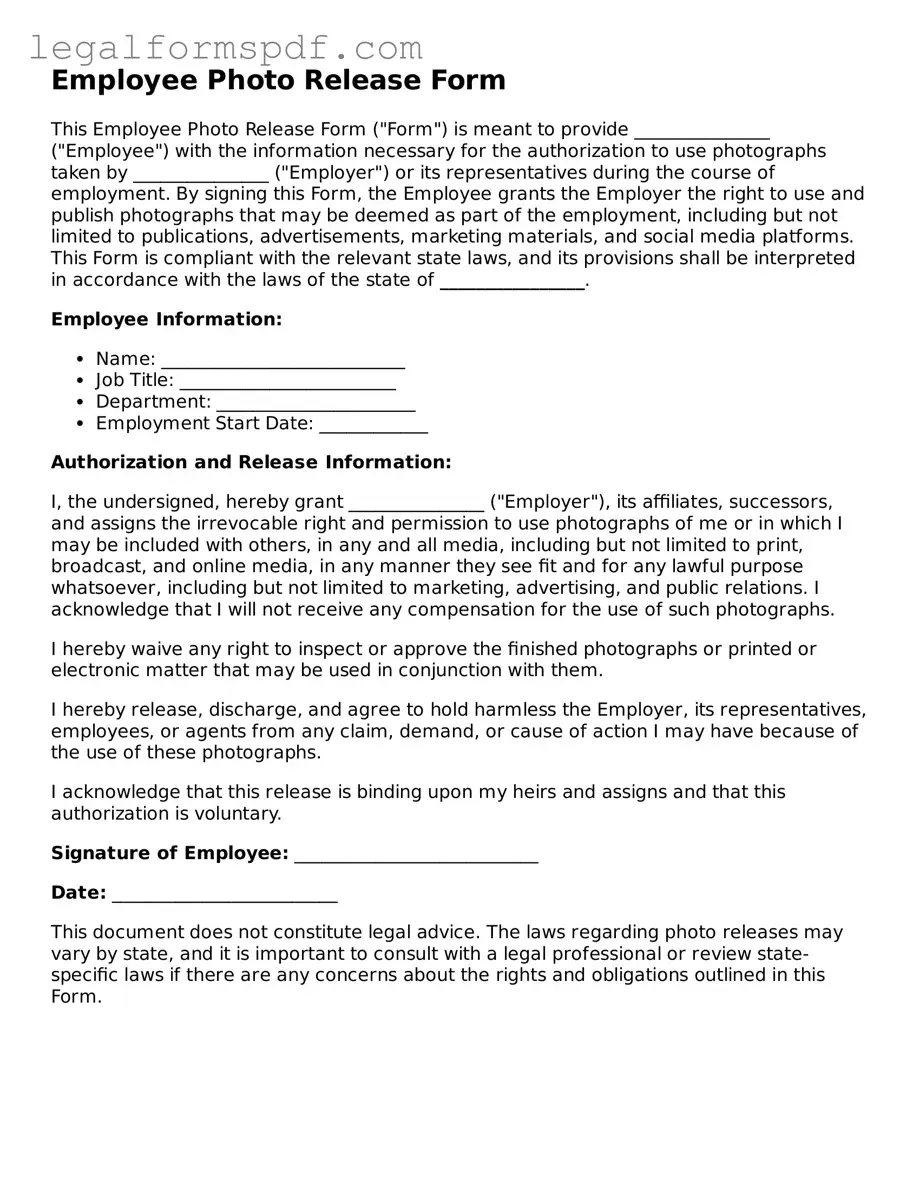Employee Photo Release Form
This Employee Photo Release Form ("Form") is meant to provide _______________ ("Employee") with the information necessary for the authorization to use photographs taken by _______________ ("Employer") or its representatives during the course of employment. By signing this Form, the Employee grants the Employer the right to use and publish photographs that may be deemed as part of the employment, including but not limited to publications, advertisements, marketing materials, and social media platforms. This Form is compliant with the relevant state laws, and its provisions shall be interpreted in accordance with the laws of the state of ________________.
Employee Information:
- Name: ___________________________
- Job Title: ________________________
- Department: ______________________
- Employment Start Date: ____________
Authorization and Release Information:
I, the undersigned, hereby grant _______________ ("Employer"), its affiliates, successors, and assigns the irrevocable right and permission to use photographs of me or in which I may be included with others, in any and all media, including but not limited to print, broadcast, and online media, in any manner they see fit and for any lawful purpose whatsoever, including but not limited to marketing, advertising, and public relations. I acknowledge that I will not receive any compensation for the use of such photographs.
I hereby waive any right to inspect or approve the finished photographs or printed or electronic matter that may be used in conjunction with them.
I hereby release, discharge, and agree to hold harmless the Employer, its representatives, employees, or agents from any claim, demand, or cause of action I may have because of the use of these photographs.
I acknowledge that this release is binding upon my heirs and assigns and that this authorization is voluntary.
Signature of Employee: ___________________________
Date: _________________________
This document does not constitute legal advice. The laws regarding photo releases may vary by state, and it is important to consult with a legal professional or review state-specific laws if there are any concerns about the rights and obligations outlined in this Form.
